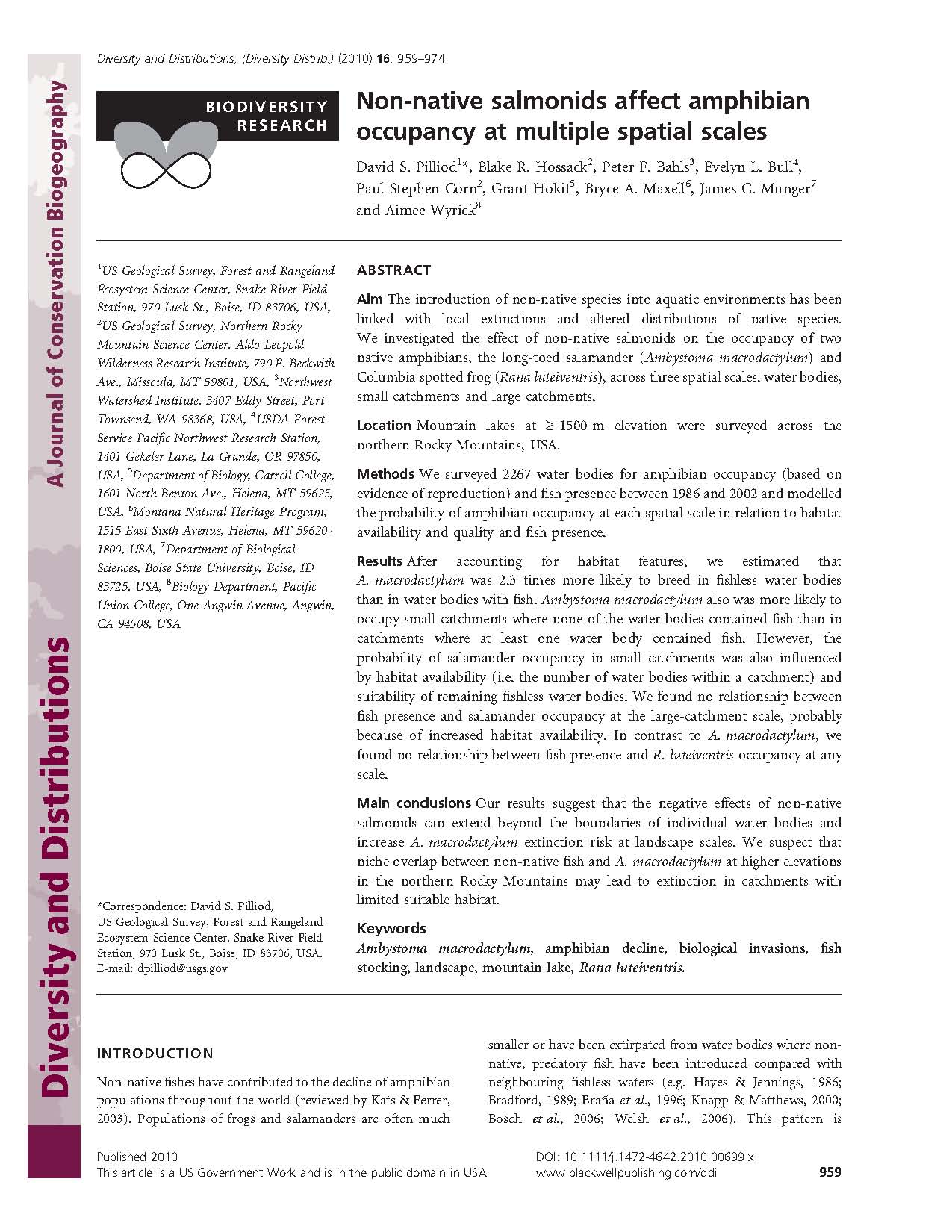Non-native salmonids affect amphibian occupancy at multiple spatial scales
http://onlinelibrary.wiley.com/doi/10.1111/j.1472-4642.2010.00699.x/abstract
Abstract/Summary
Aim
The introduction of non-native species into aquatic environments has been linked with local extinctions and altered distributions of native species. We investigated the effect of non-native salmonids on the occupancy of two native amphibians, the long-toed salamander (Ambystoma macrodactylum) and Columbia spotted frog (Rana luteiventris), across three spatial scales: water bodies, small catchments and large catchments.
Location
Mountain lakes at >1500 m elevation were surveyed across the northern Rocky Mountains, USA.
Methods
We surveyed 2267 water bodies for amphibian occupancy (based on evidence of reproduction) and fish presence between 1986 and 2002 and modelled the probability of amphibian occupancy at each spatial scale in relation to habitat availability and quality and fish presence.
Results
After accounting for habitat features, we estimated that A. macrodactylum was 2.3 times more likely to breed in fishless water bodies than in water bodies with fish. Ambystoma macrodactylum also was more likely to occupy small catchments where none of the water bodies contained fish than in catchments where at least one water body contained fish. However, the probability of salamander occupancy in small catchments was also influenced by habitat availability (i.e. the number of water bodies within a catchment) and suitability of remaining fishless water bodies. We found no relationship between fish presence and salamander occupancy at the large-catchment scale, probably because of increased habitat availability. In contrast to A. macrodactylum, we found no relationship between fish presence and R. luteiventris occupancy at any scale.
Main conclusions
Our results suggest that the negative effects of non-native salmonids can extend beyond the boundaries of individual water bodies and increase A. macrodactylum extinction risk at landscape scales. We suspect that niche overlap between non-native fish and A. macrodactylum at higher elevations in the northern Rocky Mountains may lead to extinction in catchments with limited suitable habitat.
Publication details
| Published Date: | 2010 |
| Outlet/Publisher: | Diversity and Distributions 16: 959–974 |
| Media Format: | URL |
ARMI Organizational Units:
Pacific Northwest - BiologyRocky Mountains, Northern - Biology
Topics:
Invasive SpeciesManagement
Species and their Ecology
Place Names:
IdahoMontana
Oregon
Keywords:
amphibiansARMI
fish
habitat
introduced species
population

